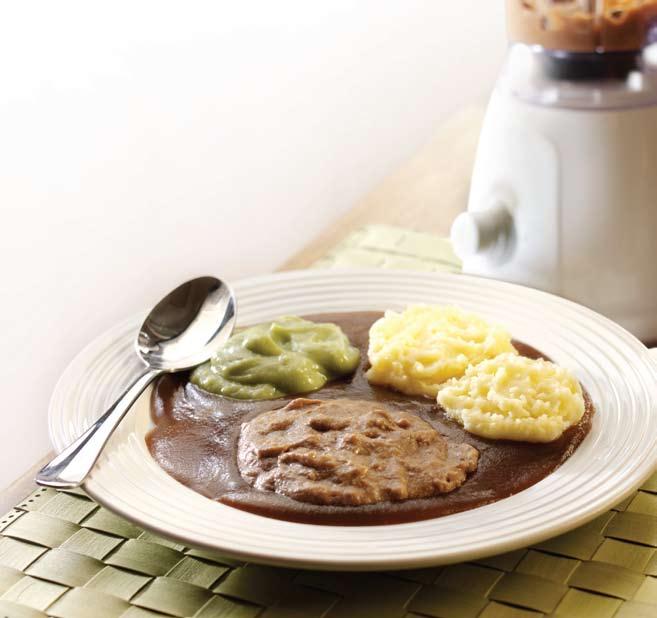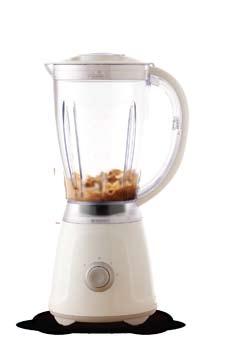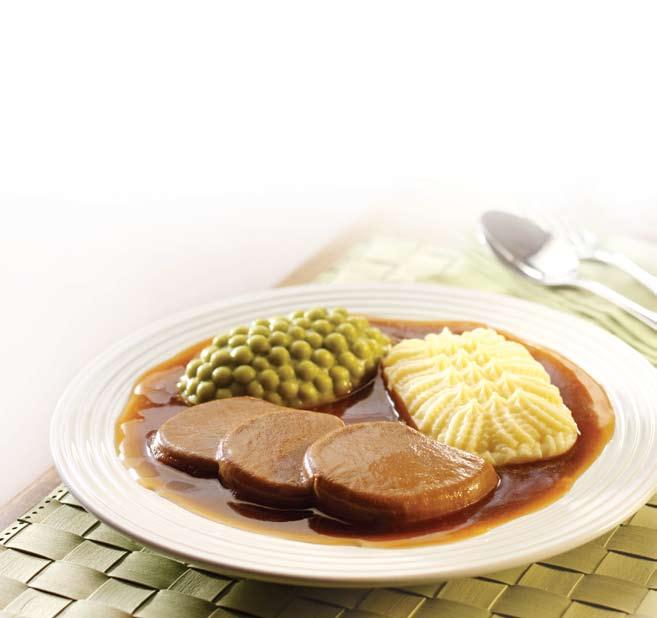
10 minute read
Gluten-free
glUten-free ProdUCtS: to PreSCribe or not to PreSCribe?
Eirini Koutroulis Dietitian
Advertisement
for article references please email: info@network healthgroup.co.uk
eirini Koutroulis is a dietitian working in the nhS, with experience in media and an interest in research and public health.
there has been much debate regarding gluten-free (gF) product prescriptions and some Primary Care trusts have limited the types of products to the most necessary, such as bread varieties, pasta and flour. Nevertheless, these prescriptions are estimated to have cost the NHS 27million pounds in 2013 (1).
This cost is bound to increase as the number of people being diagnosed with coeliac disease (CD) grows. With this in mind, the following questions arise: Are food prescriptions really necessary? What other alternatives are there to food prescriptions for the dietary management of coeliac disease?
CoELIAC DISEASE CD is an autoimmune disease where the ingestion of gluten results in inflammation of the small intestine and villous atrophy in genetically susceptible people. Some of the symptoms include macro- and micro-deficiencies, gastrointestinal symptoms, increased risk of bowel cancer, infertility and growth problems in children. The types of symptoms vary and can be mild to severe, with some people having no obvious signs. It is believed to be present in one in 100 people and increases to one in 10 where a firstdegree family member has the condition (2). Those suffering from other autoimmune diseases, such as Type 1 diabetes and autoimmune thyroid disease, may be at a higher risk of developing CD.
Dermatitis Herpetiformis is a skin condition linked to CD and occurs in one in 10,000 people (2). It is estimated that only 24 percent of people with CD have officially been diagnosed and there has been a fourfold increase in incidence in the UK over the past 22 years (3).
DIAGNoSIS Serological tests and a gut biopsy are required to confirm diagnosis (4). Prior to testing, ≥3 g gluten (two slices of wheat bread) per day must be consumed for a minimum of two weeks to avoid a false negative result (4).
TREATMENT The only treatment currently available is a strict adherence to the lifelong exclusion of gluten from the diet. This involves not only avoiding gluten in food, but also sterilising surfaces to avoid cross-contamination with gluten-containing products.
Gluten is a protein naturally present in wheat, barley, rye and cereal hybrids, such as triticale. Some guidelines also suggest avoiding oats for the first six to 12 months due to sensitivity to the gluten-like protein called avenins (5).
The remaining list of naturally GF grains and staple foods is quite long (Table 1), so what are the difficulties in choosing naturally GF foods?
Table 1: List of some naturally gluten-free staple foods and grains
gluten-free grains and staple foods
Amaranth, buckwheat, cassava, corn, rice, wild rice, potato, gram flour, hemp, maize, millet/bajra, polenta, quinoa, soya, tapioca, teff, urd/urid/urad flour, uncontaminated oats, sorghum All unprocessed meat, diary, fish, vegetables, fruit, nuts, seeds, beans and pulses and uncontaminated products of these foods.
These include partial coverage of the cost of foods, tax deductions/relief for the cost of Gf foods, delivery expenses and even conference costs.
Country Policy Considerations
New Zealand (8) Part-subsidy Patients pay part of the cost of the product. No new products will be on gluten-free added to the list in the future. product list. Need to take into account the extra charges for GP prescription, possible pharmacy charges and cost of products to assess cost effectiveness.
United States (9)
tax deduction
as a medical expense
Includes: • the difference in price between a GF product and the non GF equivalent product; • the full cost of items used for GF home baking, which would otherwise not be used, i.e. xanthan gum; • a part of the travel costs to stores for GF foods, including tolls and parking fees; • the full cost of delivery expenses for GF food made by mail order; • admission and transportation to a medical conference related to coeliac disease. However, aggregated medical expenses need to reach 7.5% of adjusted gross income before becoming eligible to write off the excess (IRS Publication 502). Canada (10) tax deduction Includes: as a medical • the average incremental cost of a food between the GF and the expense non-Gf variety; • full cost of intermediate items to make a GF food (e.g. Rice flour, Gf spices). ireland (11) tax relief Able to claim back the standard rate on special dietary Gf products (not foods that are naturally gluten-free) from taxes. Since September 2012, gluten-free foods are no longer available on the Medical Card or Drug Payment Scheme.
The risk of cross-contamination of naturally GF foods during the manufacturing process and the presence of gluten-containing grains or additives in processed foods, are two of the main concerns when choosing a food product. Quite often there is ambiguity and inadequate information on the food labels, so patients need to refer to the Coeliac UK Food and Drink Directory (database of GF products) or call Coeliac UK, or the food company itself for clarification. For example, barley malt extract is derived from a gluten-containing grain, but can be tolerated in small amounts and, unfortunately, the quantity is not indicated on the food label. If the level of gluten in the final product is ≤20ppm, then it is considered GF, according to a new law from the European Commission (EC41/2009). These products may be indicated with the Cross Grain Symbol on food packaging, but the use of this symbol is optional. This ambiguity may limit a patient’s diet to the most familiar and clearly indicated GF products, and could increase dependence on GF product prescriptions, as these appear to be the safest option.
DIETARy MANAGEMENT IN THE UK Currently in the UK, the NHS offers GF products on prescription. Patients are able to choose from an approved list of products and each GF product equates to a certain number of units. Each patient has an allowance of units per month according to the National Prescribing Guidelines (6). These are based on information from the National Diet and Nutrition Survey and it is assumed that other naturally GF staple foods are consumed as well. However, the area prescribing policies, which come from the local Clinical Commissioning Group, may differ and, ultimately, the number of units prescribed will depend on the clinical deci-
Beef & Gravy
with mashed potato and peas
Staying well-nourished can be a challenge for patients who have difficulty chewing or swallowing. Blended at Those on a puréed diet are faced with: home for • Messy and dissatisfying results people with • Reduced nutritional content dysphagia • Time-consuming food preparation • The danger of not blending to a safe consistency • Reduced choice – unable to enjoy high risk foods, such as peas Unsurprisingly, patients can often lose their desire to eat and may try to avoid mealtimes altogether. The good news is there is a more appetising alternative.
Made in a blender at home
Staying well-nourished can be a challenge for patients who have difficulty chewing or swallowing. Those on a puréed diet are faced with: • The danger of not blending to a safe consistency • Messy and dissatisfying results • Reduced nutritional content • Time-consuming food preparation • Reduced choice – unable to enjoy high-risk foods like peas
Unsurprisingly, patients can often lose their desire to eat and may try to avoid mealtimes altogether. The good news is there is a more appetising alternative…

sion of each individual GP. Eighty percent of CD patients are receiving GF food prescriptions (3), which is costing the NHS approximately 27 mil-lion pounds; however, investigations by the BBC have suggested that the cost may be a lot higher if handling and delivery charges are included (7).
GLUTEN-fREE PRoDUCT PRESCRIPTIoNS The use of the GF food prescriptions started in the 1960s when GF staple foods, such as flour and bread, where not as readily available in stores and food labels were less informative. Availability is still an issue today for gluten-free versions of wheat based products, particularly in rural areas and in the smaller stores (12), and the information on food labels is quite often still inadequate. The cost of these products is estimated to be 80 percent to 500 percent more expensive than the gluten-containing equivalent (12), making them unaffordable for those on a low-income.
Since 2011, some areas have introduced restrictions to GF prescriptions. A recent study in Scotland showed significant under-prescribing of GF products amongst 16 GP practices, when compared to the Coeliac UK guidelines (13). The impact of these changes was examined in a recent research project commissioned by the British Specialist Nutrition Association (14). The findings show that the greatest negative impact on patients was financial. Patients also experienced difficulties in finding GF products and were unsure of their suitability. These factors may affect compliance and the nutritional value of the diet. A survey conducted by the University of Chester, comparing the GF diet with the Estimated Average Requirements in the UK, highlighted inadequate intake of calcium, non-starch polysaccharides and vitamin D and stressed the importance of GF fortified products for a nutritionally complete diet (15), however, GF products are not always fortified (16).
Consuming fortified GF products may not be the only way of creating a nutritionally complete diet. Using alternative naturally GF grains can significantly improve the nutrient profile of the diet (17). There are also other low cost products, such as fortified supermarket own-brand breakfast cereals (e.g. Rice Krispies and Corn Flakes), which can be included in the diet and are not prescription products.
Dietetic consultations not only educate patients on how to avoid gluten in the diet, but also ensure sufficient intake of nutrients, vitamins, fibre and calcium (18). Also, dietetic input and regular follow-ups appear to be key factors in compliance with a GF diet (19, 20), but dietetic support may be underprovided in the UK (21).
MovING foRWARD Improving people’s understanding of food labels and knowledge of alternative GF grains and foods may be achieved with store tours and cooking classes. These group sessions could potentially provide more frequent contact with dietitians, improve patients’ confidence in choosing the right products on a budget, increase the variety of foods consumed by exposing patients to less familiar foods, and possibly reduce dependence on food prescriptions, while creating a more nutritious and varied GF diet.
A study investigating the cost and the accessibility/availability of uncontaminated naturally GF foods and grains in stores would help with the development of such a program. It may also highlight the difficulties in using food labels alone to determine product suitability in a GF diet, and suggest improvements.
GF food prescriptions have been reduced in both variety and quantity over the past few years, which has left patients feeling unsupported financially and in many other ways (14). It would be interesting to assess the effectiveness of store tours and cooking classes as a supplementary treatment, or as an alternative to food prescriptions, to ensure that patients have adequate support in following a nutritionally complete GF diet.
Beef & Gravy
with mashed potato and peas
Created by our chef for people with dysphagia

…created by Wiltshire Farm Foods’ award-winning chef
Our award-winning Puréed, Pre-Mashed & Fork Mashable meals make a genuine difference to the people who use them. We ensure each recipe is: • Made to the specific requirements of Category C, D or E diets • Great-tasting and visually appealing • Nutritionally balanced • Quick and easy to prepare • Increased choice – prepared to safely include high-risk foods like peas
Visit www.wiltshirefarmfoods.com/dysphagiadiets or call 0800 066 3169 to request our free dysphagia brochures and help your patients put the meal back into mealtimes.






